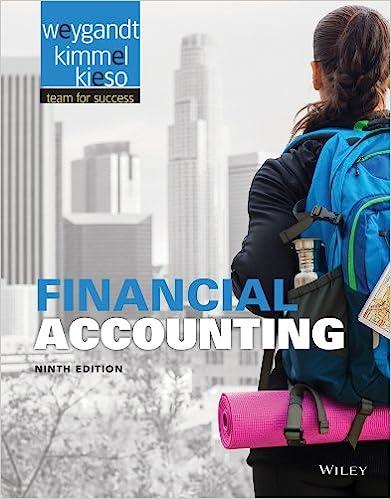Answered step by step
Verified Expert Solution
Question
1 Approved Answer
Final Case Project Suppose a beverage company is considering adding a new product line. Currently the company sells apple juice and they are considering selling
| Final Case Project | |||||||||
| Suppose a beverage company is considering adding a new product line. | |||||||||
| Currently the company sells apple juice and they are considering selling a fruit drink. | |||||||||
| The fruit drink will have a selling price of $1.29 per jar. The plant has excess capacity in a | |||||||||
| fully depreciated building to process the fruit drink. The fruit drink will be discontinued in four years. | |||||||||
| The new equipment is depreciated to zero using straight line depreciation. The new fruit drink requires | |||||||||
| an increase in working capital of $15,000 and $5,000 of this increase is offset with accounts payable. | |||||||||
| Projected sales are 60,000 jars of fruit drink the first year, with a 7 percent growth for the following years. | |||||||||
| Variable costs are 16% of total revenues and fixed costs are $10,000 each year. The new equipment costs | |||||||||
| $65,000 and has a salvage value of $5,000. | |||||||||
| The corporate tax rate is 25 percent and the company currently has 10,000 shares of stock outstanding | |||||||||
| at a current price of $11.50. The company also has 500 bonds outstanding, with a current price of $995. The | |||||||||
| bonds pay interest annually at the coupon rate is 2.5%. The bonds have a par value of $1,000 and will | |||||||||
| mature in twenty years. | |||||||||
| Even though the company has stock outstanding it is not publicly traded. Therefore, there is no publicly | |||||||||
| available financial information. However, management believes that given the industry they | |||||||||
| are in the most reasonable comparable publicly traded company is Cott Corporation (ticker symble | |||||||||
| is COT). In addition, management believes the S&P 500 is a reasonable proxy for the market portfolio. | |||||||||
| Therefore, the cost of equity is calculated using the beta from COT and the market risk premium based on the | |||||||||
S&P 500 annual expected rate of return.
| |||||||||
| in the return exercise. You can simply multiply that rate by 12 for an expected annual rate on the | |||||||||
| market.) The WACC is then calculated using this information and the other information provided | |||||||||
| above. Clearly show all your calculations and sources for all parameter estimates used in the WACC. | |||||||||
| Required | |||||||||
| 1. Calculate the WACC for the company. | |||||||||
| 2. Create a partial income statement incremental cash flows from this project in the | |||||||||
| Blank Template worksheet using the tab below. | |||||||||
| 3. Enter formulas to calculate the NPV by finding the PV of the cash flows over the next four years. | |||||||||
| (You can either use the EXCEL formula PV() or use mathmatical formula for PV of a lump sum.) | |||||||||
| 4. Set up the EXCEL worksheet so that you are able to change the parameters in E3 to E12. | |||||||||
| Run three cases best, most likely, and worst case where the growth rate is 30%, 20%, and 5%, | |||||||||
| respectfully. | |||||||||
| 5. Create a NPV profile for the most likely case scenario. (See NPV Calculation tab below.) | |||||||||
| 6. State whether the company should accept or reject the project for each case scenario. | |||||||||
Step by Step Solution
There are 3 Steps involved in it
Step: 1

Get Instant Access to Expert-Tailored Solutions
See step-by-step solutions with expert insights and AI powered tools for academic success
Step: 2

Step: 3

Ace Your Homework with AI
Get the answers you need in no time with our AI-driven, step-by-step assistance
Get Started


